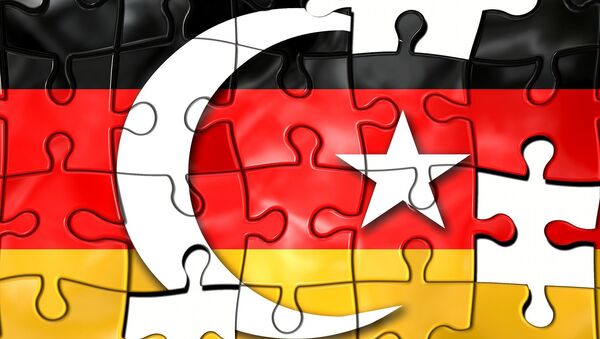Amid growing concerns over the dramatic demographic implications of the rise in the number of refugees and migrants from predominantly Muslim countries in recent years, Pew modeled three different possible scenarios to project the rise of the Muslim population.
Defining Europe as the 28 countries of the EU plus Norway and Switzerland, and estimating its present Muslim population at about 25.8 million people (or 4.9% of the total population), the think tank concluded that even if all Muslim migration into Europe were immediately halted, the continent's Muslim population would still rise by nearly 33% (to 7.4%) in just over a generation.
Will Europe be a melting pot or a pot that melts? Muslim population in Europe According to Pew Research. A challenge for new immigrants to fully assimilate and not remain culturally isolated 👇🏻 pic.twitter.com/MEiBeTcgFY
— Fernando Amandi Sr. (@FernandoAmandi) 29 ноября 2017 г.
Pew's 'medium' migration model assumes the halt in refugee flows as of mid-2016, but a continuation of 'regular' migration. In this scenario, Muslims are expected to reach 11.2% of Europe's population by 2050.
Europe’s Growing Muslim Population https://t.co/gCqTZ5rQYP pic.twitter.com/VHtLOgB8Au
— Vassilios Tzounakis (@tzounakis) 30 ноября 2017 г.
Finally, the 'high' projection assumes the continuation of large flows of refugees from Muslim-majority countries to complement those coming in under ordinary migration procedures. In this scenario, Muslims will make up an estimated 14% of the continent's population in the space of 33 years, nearly tripling their current share of the population.
Even best case (no migration) scenario projections of Europe's Muslim population (for 2050) is the stuff of nightmares. Can we figure this out? I don't know. pic.twitter.com/PMS9FRfLXK
— Alba Rising (@Alba_rising) 29 ноября 2017 г.
The Muslim population in Europe has grown from 19.5 million in 2010 (3.8% of the population) to 25.8 million (4.9%) in 2016 pic.twitter.com/0julrHrLW3
— Conrad Hackett (@conradhackett) 29 ноября 2017 г.
Causes of Muslim population growth in Europe from 2010-2016
— Conrad Hackett (@conradhackett) 29 ноября 2017 г.
Net migration: +3.5 million
Natural increase: +2.9 million
Switching: —160khttps://t.co/VDWv1Qn3Pb pic.twitter.com/68RfVEagGk
'East West Divide'
Among the most astonishing aspects of Pew's research are its predictions regarding the geographical location of this migration. Under Pew's 'high' migration scenario, Muslims could make up 30.6% of the population of Sweden, 19.9% of that of Austria, 19.7% of that of Germany, 18% of that of France, 17.2% of that of the UK, 18.2% of that of Belgium, 17% of that of Norway, 16% of that of Denmark, 15.2% of that of the Netherlands, and 14.1% of that of Italy.
The #Muslim population in the #UK could triple in 20 years, according to projections from the Pew Research Centre. That means the number of #Muslims in #Britain would rise from 4.1 million in 2016 to 13 million in 2050. pic.twitter.com/OTFmQHHqCx
— Srbija Evropa (@srbija_eu) 30 ноября 2017 г.
Major new report from @PewReligion projects Muslim population in 30 European countries through 2050 under each of 3 scenarios:
— John Gramlich (@johngramlich) 29 ноября 2017 г.
1) no migration 2) medium migration 3) high migrationhttps://t.co/WfvEjipih0 pic.twitter.com/YYlfjgP9vP
Even under its 'high' migration scenario, Pew projects a Muslim population of 4.5% of the total population for Hungary, 1.2% for the Czech Republic, 1% for Estonia, 0.9% for Romania, 0.7% for Slovakia, 0.4% for Latvia, and 0.2% for Lithuania and Poland. In Western Europe, only Ireland (4.4%) and Portugal (2.5%) come close to these projections.





